Porchetta Romana is classic street food from Rome. Learn how you can make it at home without buying an entire pig.
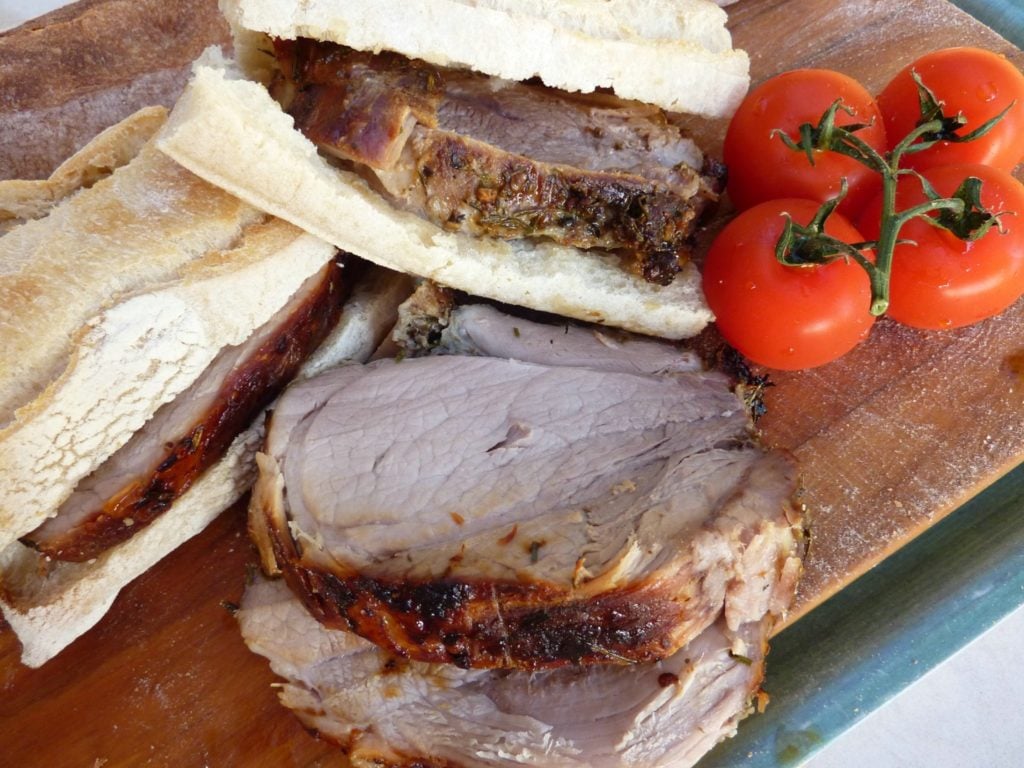
Jump to:
Life was different before the first McDonald’s opened in Rome in Piazza di Spagna. As teenagers growing up in Rome in the 70’s, we wouldn’t crave the BigMac. Our Vespa’s gatherings were organized around Porchetta Romana Food Stalls and the Grattachecca Kiosk, serving crushed ice with fresh fruits.
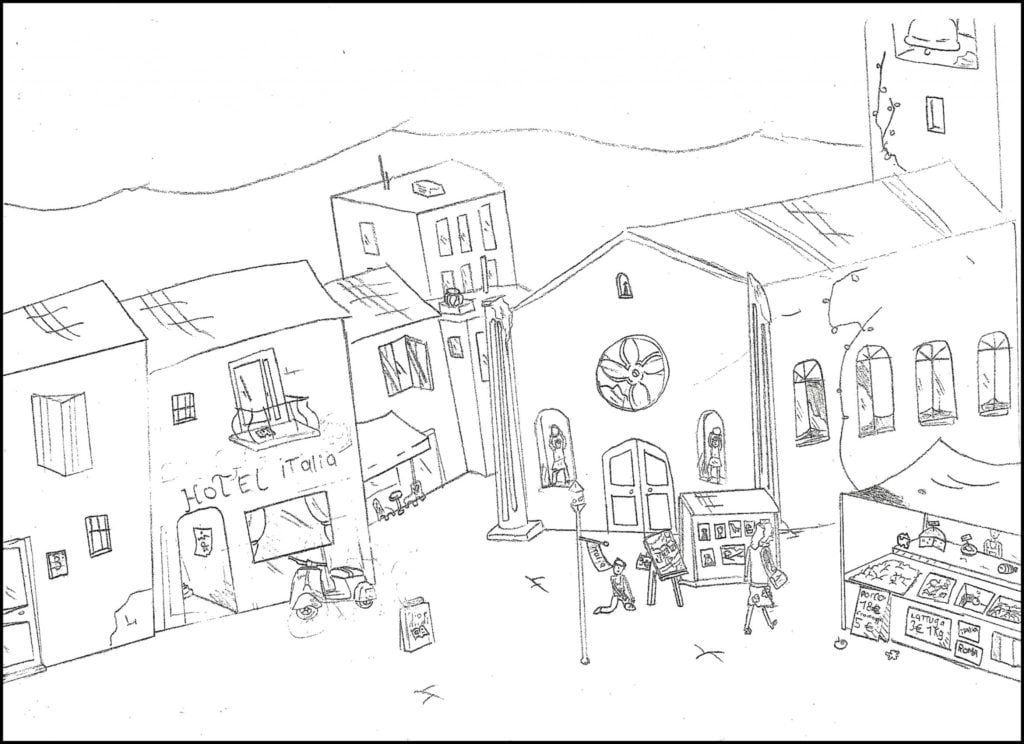
What is Porchetta Romana
Porchetta Romana is a large cut of pork (almost half), wrapped in its rind and flavoured with herbs. It was cooked on a wooden fire, cut in slices and served in a crusty Panino/Rosetta.
Usually sold in busy streets, markets and outside the football stadium, it was the food to have at every street food festivals. The most famous La Sagra dei Castelli Romani!
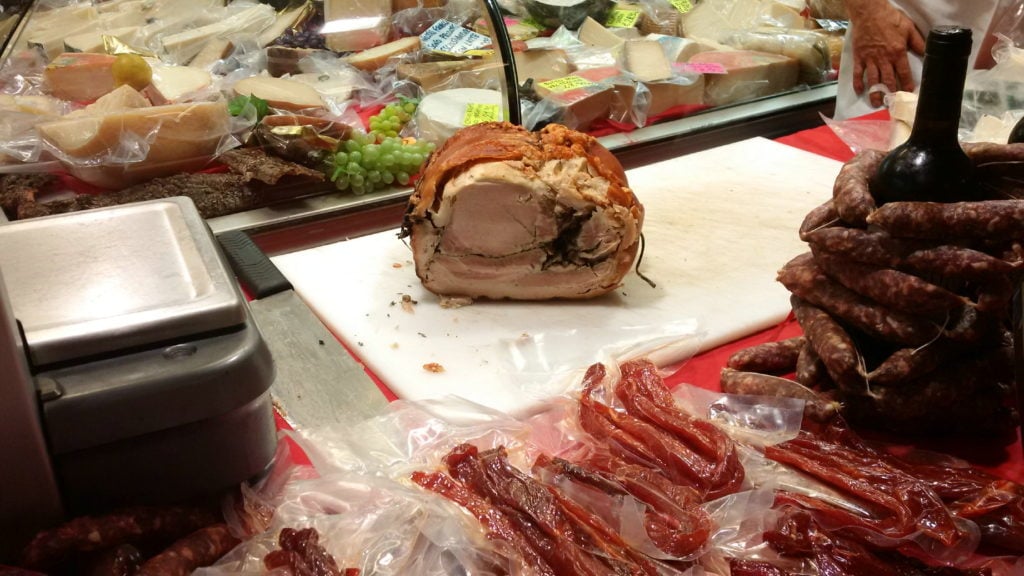
The Author of this home-adatted Porchetta Recipe
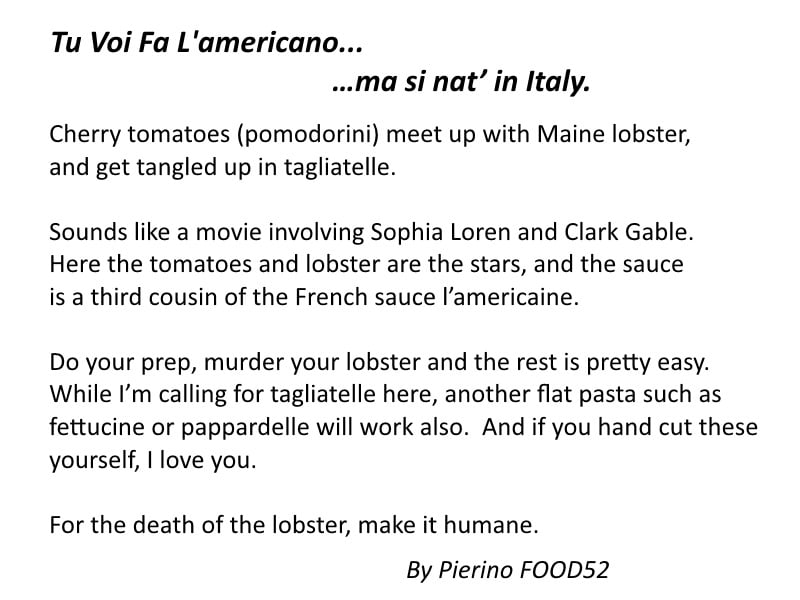
You can imagine my surprise when I came across the recipe on FOOD52, an American food community. The author was Pierino, a food writer and a “Romanista Curva Sud” activist, now living in California.
Pierino has a remarkable skill; he takes traditional Italian and French (but not only) recipes and with artistic creativity explains them with hands-on guidelines suited for an international audience.
While he does that, he doesn’t forget to entertain you with intricate stories and triggering a good laugh.
Which cut of meat to use
The difficulty in adapting local recipes for a larger international audience is the availability of the ingredients. While the internet gives you access to recipes worldwide, finding the right ingredients is often the challenge that blocks you from making them.
Indian spices, Asian sauces, Italian cheese are only a few of my burdens when cooking around the world.
Cuts of meat and their names are also tricky, which is why I invested so much time in creating these charts. I was pleased to see how Pierino was able to recreate a Roman street delicacy with a recipe suited for home cooking.
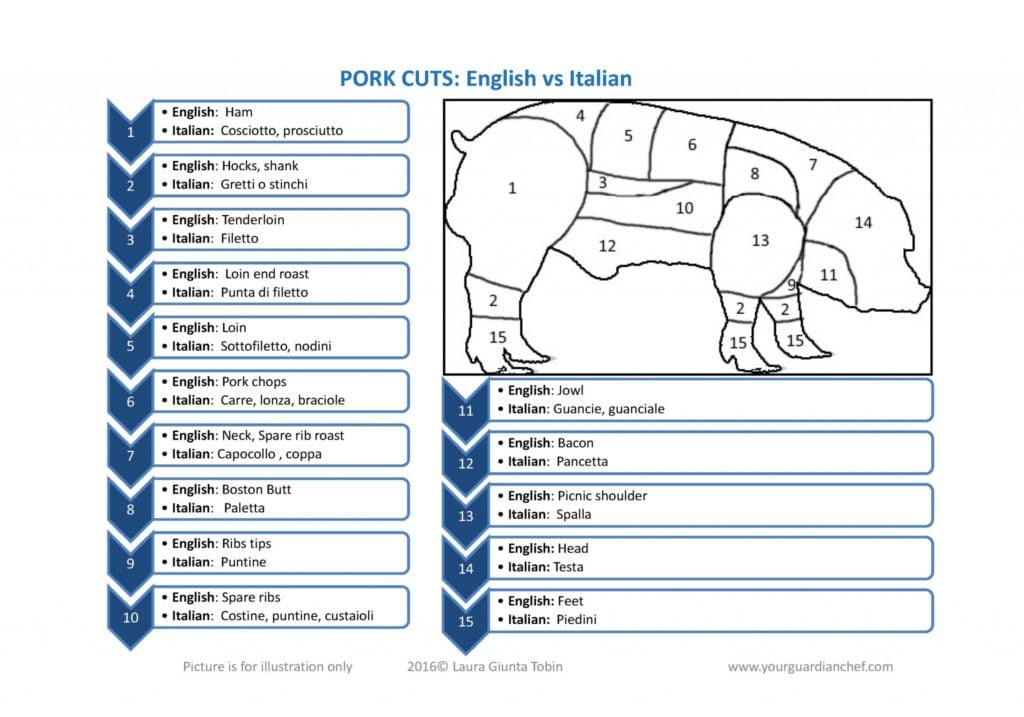
If you want to make a Porchetta Romana at home, you cannot cook the same huge cut traditionally used in Rome. So Pierino suggests to use a smaller cut: Picnic shoulder (Eng.); Épaule (Fr.); Spalla (It.)
I couldn’t miss this opportunity to try, so I headed to my favourite butcher and bought the Picnic Shoulder.
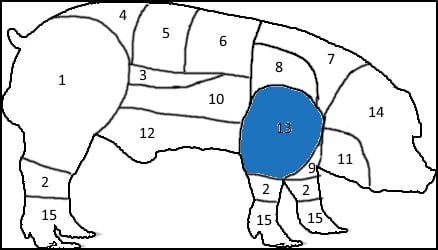
Unfortunately, there was no rind attached, and I missed the crackling. But nevertheless, the result was fantastic and it is a perfect idea for an outdoor picnic.
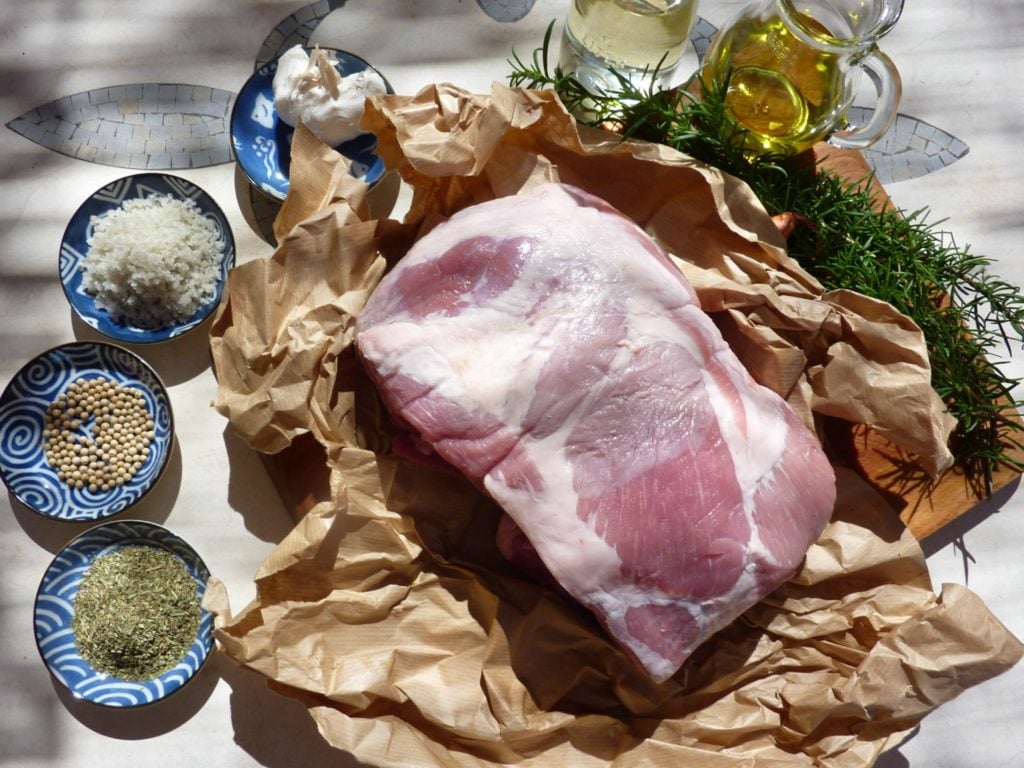
Ingredients:
- 2 kilos of picnic shoulder
- 1 fistful of kosher salt
- ground white pepper
- 3 cloves garlic
- 2 shallots, minced
- 1 bunch fresh chives, chopped (optional)
- 1 tablespoon fennel pollen, or alternatively fennel seed ground in a spice grinder.
- 2 branches fresh rosemary, leaves finely chopped
- 1 cup good olive oil
- 1 cup white wine (for basting)
6 or 8 crusty Italian sandwich rolls
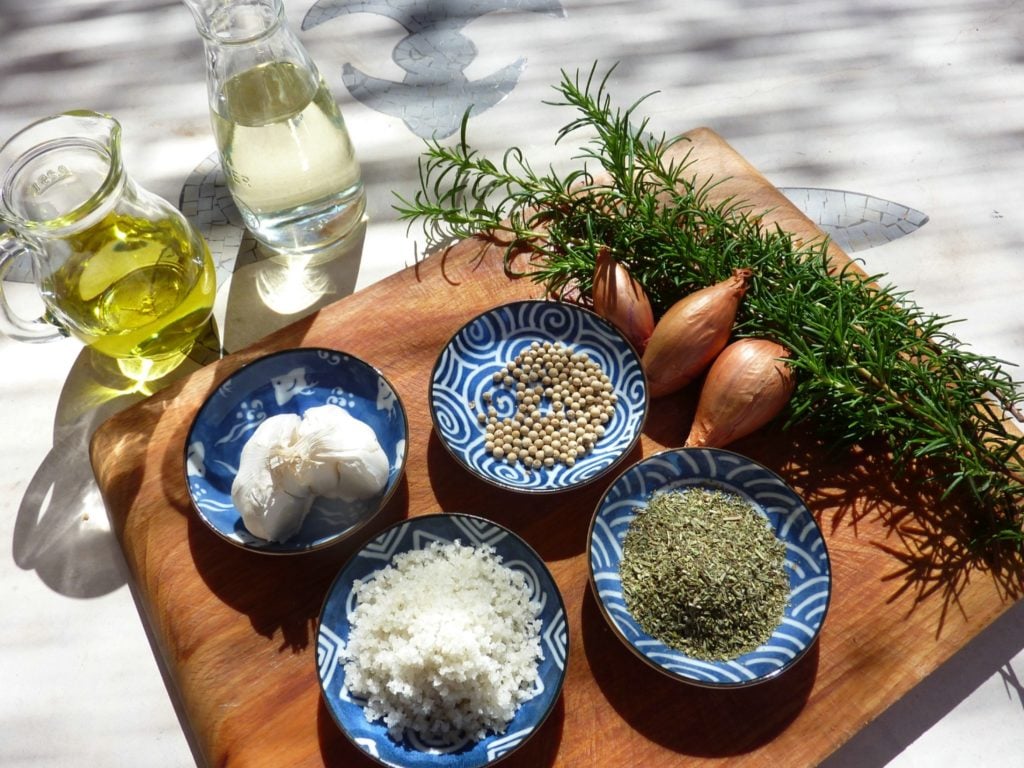
Making the Porchetta Romana
- Mince the rosemary with the garlic and finely chop the shallots
- Mix all the spices in a bowl with the olive oil, and rub them around and inside the pork.
- If your pork has the rind, make some diamond cuts, insert the herbs inside.
- Make sure the pork is well covered with spices, even inside the cut where the bone was removed.
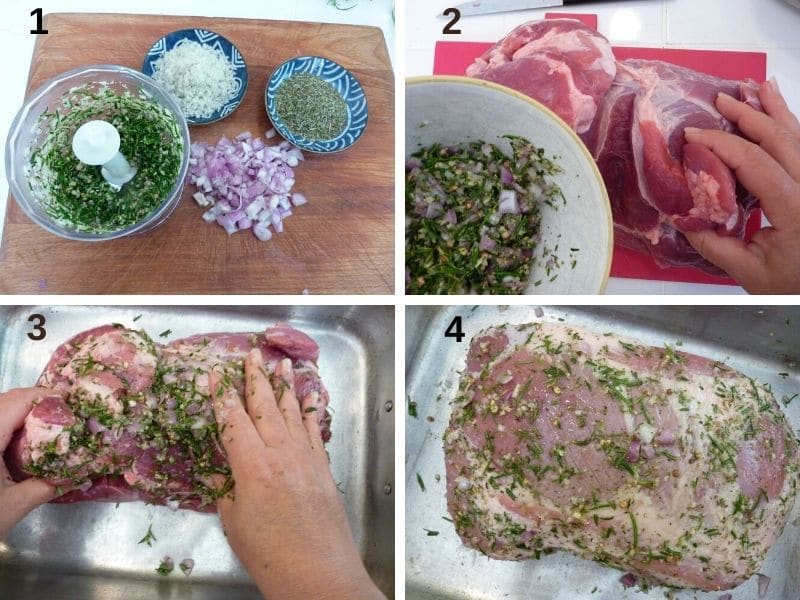
- As Pierino suggests: “Re-form the ham and then tie it up like a salami, or a fetish model, using one long single piece of cooking twine.”
- Place the ham in a roasting pan and cook it in a hot oven at 480 F - 250 C for 20 minutes.
- Baste the pork with white wine and reduce the oven heat to 355 F - 180 C.
- Baste it with white wine every 20 minutes and put the pork back in the oven until it reaches the internal temperature of 150 F - 65 C. It will take a couple of hours.
- Once it is ready, let it rest for 10 minutes before you cut the slices.
- Cut it in thin slices and serve it in a piece of crusty Italian bread.
It will feed a crowd! Enjoy,... we look forward to hearing from Pierino again in the near future.....!
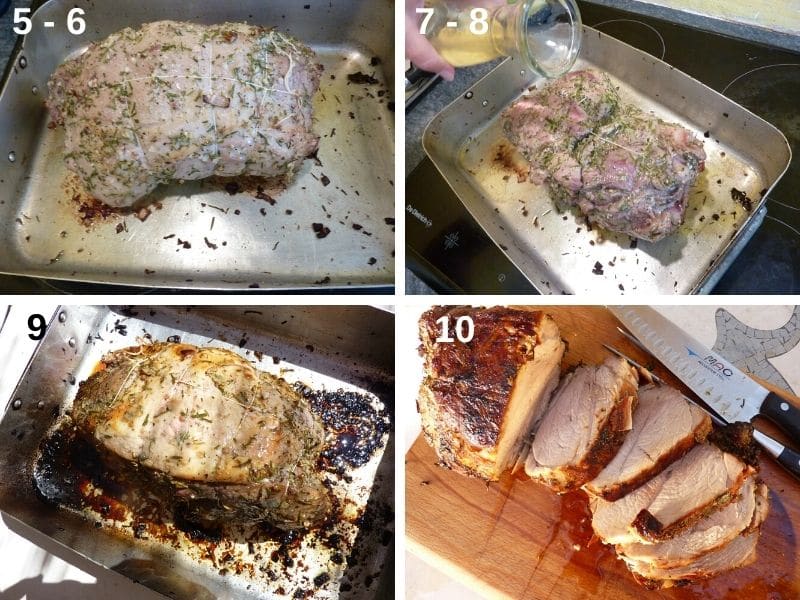
Found out more about pork cuts and how to cook them
To find out more about pork cuts, their name in French and Italian and how to cook them you can read the article: Pork Cuts Names And How to Cook Them
Recipes you might also like
- Pulled Pork Pressure Cooker
- Pork Casserole with Pineapple or whatever
- Traditional Cassoulet Recipe
- Magret de Canard à l'Orange Recipe
- Stuffed Pork Tenderloin with Chestnuts and Cranberries
- Wild Boar with Chocolate Sauce
- Homemade Roast Beef
If you are making the Porchetta Romana, leave your comment below I would like to hear from you. You can find more delicious ideas if you FOLLOW ME on Facebook, YouTube, Pinterest and Instagram or sign up to my newsletter.
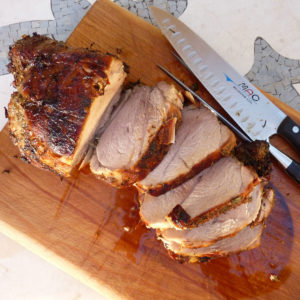
📋 Porchetta Romana Recipe
Ingredients
- 4 lb pork picnic shoulder
- 3 peeled garlic cloves
- 2 shallots minced
- 1 sprig fresh chives chopped (optional)
- 1 tablespoon fennel pollen alternatively fennel seed ground in a spice grinder
- 2 sprig fresh rosemary leaves finely chopped
- 1 cup olive oil
- 1 cup dry white wine (for basting)
- 1 fistful kosher salt
- White pepper
- 8 crusty Italian sandwich rolls
Instructions
- Mince the rosemary with the garlic and finely chop the shallots
- Mix all the spices in a bowl with the olive oil, and rub them around and inside the pork. If your pork has the rind, make some diamond cuts, insert the herbs inside.
- Make sure the pork is well covered with spices, even inside the cut where the bone was removed.
- As Pierino suggests: “Re-form the ham and then tie it up like a salami, or a fetish model, using one long single piece of cooking twine.”
- Place the ham in a roasting pan and cook it in a hot oven at 480 F - 250 C for 20 minutes.
- Baste the pork with white wine and reduce the oven heat to 355 F - 180 C
- Baste it with white wine every 20 minutes and put the pork back in the oven until it reaches the internal temperature of 150 F - 65 C. It will take a couple of hours.
- Once it is ready, let it rest for 10 minutes before you cut the slices.
- Cut it in thin slices and serve it in a crusty Italian bread.
Nutrition


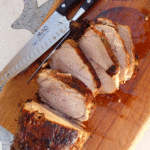
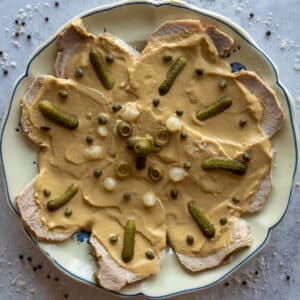
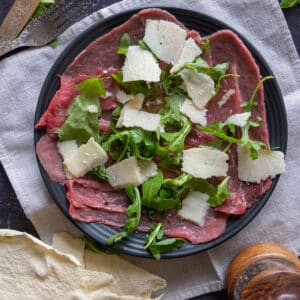
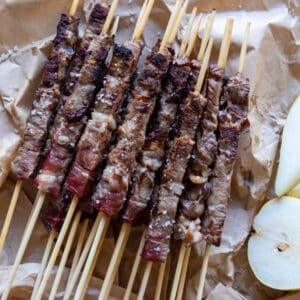
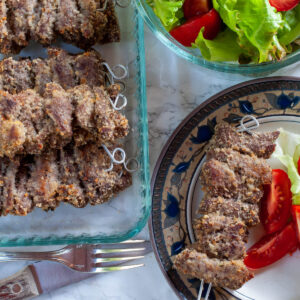
Serena
This sounds delicious! Thanks for sharing
Laura
you are welcome
Ginny
You've taught me a lot today. I've never heard of Panino/Rosetta so thanks so much.
Laura
You are very welcome Ginny
Mabintu
Yum, what a delicious sounding dish! Sounds like it would be perfect for a tasty lunch
Laura
Thanks, it is indeed
Mel
Thanks for sharing such a great, flavoursome recipe. I love a large piece of meat to roast with simple ingredients for a meal that pleases the whole family!
Laura
Thanks, I do too. And seeing their big smile
Cliona Keane
This is such a yummy recipe! I adore pork so will be giving this a go soon!
Laura
thank you
Christina Shoemaker
You had me at rosemary and white wine! Two of my favorites on everything!!
Laura
True, they are good on everthing
Giulio Romani
Obviously, you have an American style porchetta! The real one (the Porchetta Romana, that from Ariccia and the Castelli Romani), is SOLELY stuffed with the “Regaglie del maiale”.(the liver, hart, kidneys), garlic, fresh rosemary salt and pepper. Nothing else, of the spices you list go there. Try it my way and you’ll not be disappointed.
Laura
Hi Gulio, it is an American version as I wanted it to make it easy for my audience who is mainly American. Thank you for your contribution, I use to eat it all the time when I was in Rome as I had close friends in Albano Laziale. We used to go to the Marino sagra del vino every year. The best Porchetta!